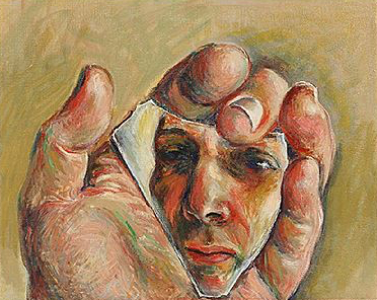
Biography
Henry Bernstein was one of the many talented artists whose work was sustained temporarily by government programs of the 1930s, but was unable to sustain a full-time career in the art world. He was the son of Lithuanian Jews in Detroit, his father an impoverished first-generation immigrant, and his mother a better-off second-generation immigrant. Graduating from a public high school in Detroit, Bernstein studied under John Carroll at the Detroit Society of Arts and Crafts, where he was a stand-out student. After that he had successful gallery shows in Detroit, New York and Washington. Seeing the opportunities offered by New Deal programs, he sought to make a living as an artist and rented a studio in Detroit with another artist, Marvin Beerbohm. As Bernstein's son notes in a wry essay on his father's life, Beerbohm hedged his bets a bit and obtained a credential to teach art in the public schools.Bernstein and Beerbohm both joined the WPA, producing easel paintings on a regular basis. Bernstein also received commissions for four Post Office murals. With the outbreak of the war, Bernstein, who was 4F due to a childhood bout of rheumatic fever, took a drafting job at the Willow Run bomber factory. By the war's end, with three children to support, Bernstein opted to continue to work as a draftsman, although his heart was never in that line of work. He was employed by several engineering firms while continuing to paint and teach informal art classes, all the while dreaming of a retirement in which he could travel to the great museums of Europe. Sadly, that retirement never came, and he died of a heart attack, likely a result of his childhood ailment.

Critical Analysis
Bernstein's son described his father's style as strongly influenced by that of John Carroll -- and not always for the best. His talent is undeniable. And he obviously approached his work in the 1930s with a great deal of energy. He was perhaps a man who, had he lived in a different era or found the right patron, might have been a much more productive and much better known artist. His Post Office murals remain as a moving testament to art that might have been.Murals
- Mount Sterling, Illinois - Post Office: The Covered Bridge
- East Lansing, Michigan - Michigan State University, Main Library: America's First Agricultural College
- Frankfort, Michigan - Post Office: On Board the Car Ferry
- Midland, Michigan - Midland County Administration Building: Chemistry
References
- Artist Biographies (New Deal Art and Architecture).
- Henry Bernstein (Smithsonian American Art Museum).
- Art Bernstein, Where Are Your WPA Paintings?, WPA Murals (2004).